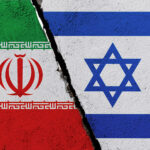Sheikh Abdulaziz H. Al Thani is the Director of the National Museum of Qatar. The museum is more than just an institution. It is a reflection of Qatar’s past, present, and future. As he walks through its architecturally striking galleries each morning, he sees a connection between the nation’s history and its ambitions. It is built around the historic palace of Sheikh Abdullah bin Jassim Al Thani. The museum combines cultural legacy with visionary modern design by Jean Nouvel. On a recent tour, Sheikh Abdulaziz guided visitors through this unique space, highlighting its role as a bridge between heritage and innovation.
Preserving Heritage, Inspiring Ambitions
“The Museum is a journey through space and time,” he shares, noting how it provides visitors a chance to experience Qatar’s history and look forward to its future. As a national treasure, the museum is a platform for Qatar’s evolving cultural identity. It is a mission of Sheikh Abdulaziz that he holds close to heart since he was entrusted with this role by Her Excellency Sheikha Al Mayassa bint Hamad bin Khalifa Al Thani, Chairperson of Qatar Museums. His vision for the museum aligns seamlessly with Qatar Museums’ overarching goals to foster cultural understanding both domestically and internationally.
From Finance to Culture
Sheikh Abdulaziz’s journey to his current role is unique. Transitioning from a career in finance to leading a cultural institution was a significant shift, yet his experience in sponsorships and communications, particularly during the FIFA World Cup Qatar 2022, made the transition natural.
“Every aspect of my previous roles—banking, development, sponsorships, and communications—is reflected in the exhibitions and programs here,” he remarks, underscoring his hands-on approach to storytelling within the museum’s galleries.
Rooted in History, Built for the Future
The museum’s origins trace back to the palace of Sheikh Abdullah bin Jassim Al Thani, which became Qatar’s first national museum in 1975. With Nouvel’s architectural design encircling the old palace, the new museum, opened in 2019, integrates tradition and modernity seamlessly.
Through multimedia exhibitions featuring video interviews with generations of Qataris, the museum brings Qatar’s heritage alive while using advanced technology to create a multisensory experience. “We preserve heritage in highly sophisticated ways, creating a space where people visit from all around the world” Sheikh Abdulaziz explains.
Legacy of the FIFA World Cup and Years of Culture
Reflecting on the 2022 World Cup, Sheikh Abdulaziz recalls its transformative role in introducing global audiences to Qatar’s culture. The event fostered cultural exchanges on an unprecedented scale, amplified through Qatar’s Years of Culture initiative.
The event promotes cultural ties with diverse nations annually. During the tournament, the National Museum hosted On the Move, an exhibition exploring nomadic lifestyles across the Sahara and Middle East.
It reflects Qatar’s commitment to sharing its cultural values with the world. This year, the museum is the centerpiece of the Qatar-Morocco Year of Culture. It features exhibitions that celebrate Morocco’s vibrant heritage and collaborative displays with Qatari designers.
There is a couture collection by Moroccan designer Mohamed Benchellal and a reinterpretation of the traditional Qatari Bisht by Qatari designer Mashael Al Naimi. These masterpieces add modern perspectives to age-old traditions.
Promoting Sustainable Practices in Culture
The National Museum of Qatar recently achieved Carbon Neutrality Certification. This certificate makes it a pioneer in sustainability among cultural institutions. Sheikh Abdulaziz emphasizes the museum’s commitment to eco-friendly operations.
It aligns with its mission to respect both cultural and environmental legacies. “The museum is a beacon of sustainability,” he asserts. The architectural design and curated exhibitions support and inspire visitors toward environmental stewardship.
Expanding Qatar’s Cultural Footprint
Under Sheikh Abdulaziz’s leadership, the National Museum of Qatar has achieved several milestones. Such as Qatar’s first traveling exhibition in Mongolia and the establishment of the Digital Centre. It engaged over 900 students in its inaugural year. International partnerships, including a recent MoU with China and a collaboration with the Gwangju Biennale Pavilion, have further elevated Qatar’s cultural influence globally.
The museum’s upcoming exhibitions reflect its commitment to inclusivity and global relevance. A major showcase, Manzar: Art and Architecture from Pakistan 1940s to Today, will explore Pakistan’s art evolution. It will bring together various narratives and cultural achievements. This exhibition aligns with Qatar Museums’ dedication to cultural exchange and understanding.
A Vision for the Future
Sheikh Abdulaziz continues to shape the National Museum of Qatar’s future. His ambition is to deepen its cultural impact and reinforce its global presence. “Our mission is to honor tradition while connecting communities and cultures worldwide,” he states.
Through diverse exhibitions, he aims to position the museum as a leader in the global art and cultural community. With Sheikh Abdulaziz’s passion and forward-looking approach, the National Museum of Qatar is poised to inspire generations. The museum is celebrating Qatar’s heritage while advancing its cultural dialogue with the world.








